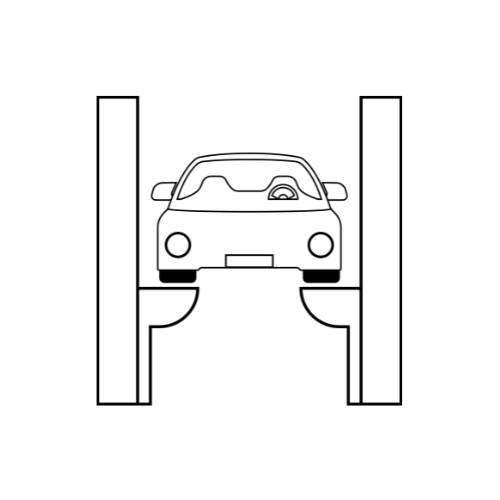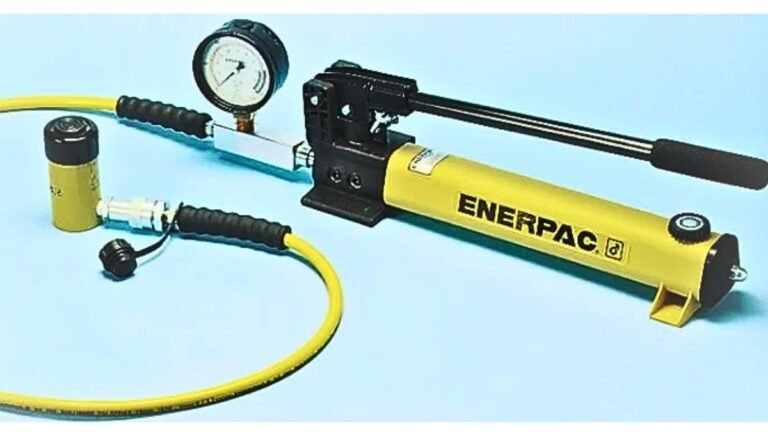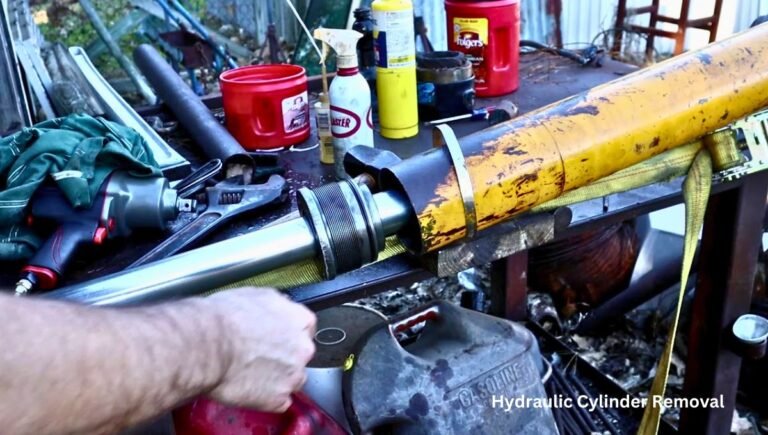How To Check Hydraulic Fluid Level On John Deere Tractor?
To check the hydraulic fluid level on a John Deere tractor, locate the hydraulic fluid dipstick. Then, remove it and observe the fluid level.
Maintaining the correct hydraulic fluid level in your John Deere tractor is crucial for optimal performance. Hydraulic fluid ensures smooth operation of various tractor components. Regularly checking the fluid level can prevent potential damage and costly repairs. It is a simple yet essential maintenance task that every tractor owner should perform.
Ensuring the correct fluid level not only enhances the tractor’s efficiency but also extends its lifespan. This guide will help you understand the steps to check the hydraulic fluid level accurately. By following these steps, you can keep your John Deere tractor running smoothly and efficiently.
Introduction To Hydraulic Systems In John Deere Tractors
John Deere tractors use hydraulic systems for various functions. These systems power things like steering and lifting. The hydraulic fluid is like the blood of these systems. Without it, the tractor won’t work well.
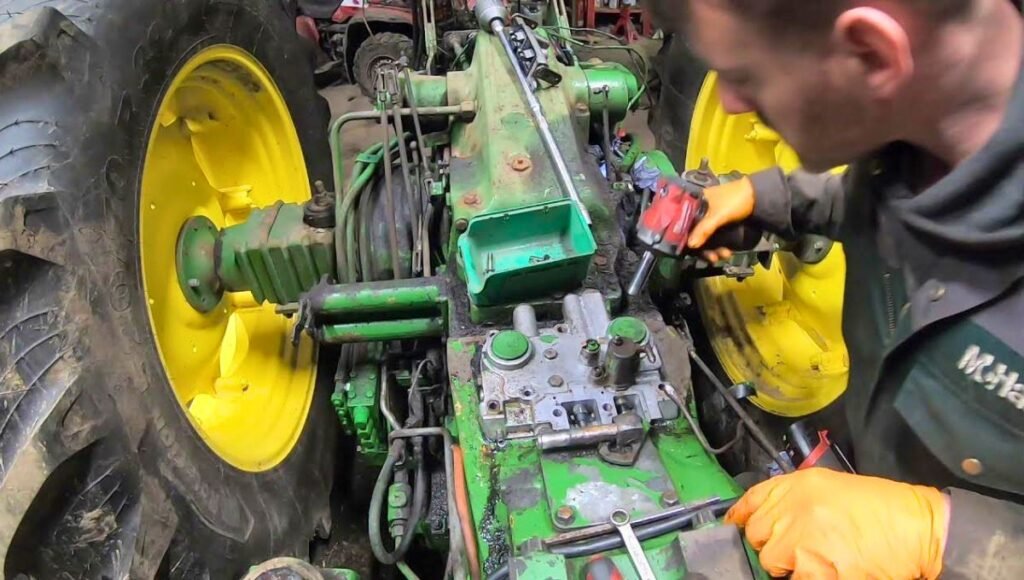
Importance Of Hydraulic Fluid
Hydraulic fluid is vital for your tractor. It helps move parts smoothly and efficiently. The fluid also cools down the system. It prevents overheating and damage. Keeping the right fluid level ensures your tractor works properly.
Signs Of Low Hydraulic Fluid Levels
Low hydraulic fluid can cause many problems. Here are some signs:
- Slow or unresponsive movements
- Strange noises from the hydraulic pump
- Overheating of the hydraulic system
- Visible leaks around hydraulic components
If you notice these signs, check the fluid level immediately. Low fluid can damage your tractor. Regular checks can prevent costly repairs.
| Sign | Description |
|---|---|
| Slow Movements | The tractor moves slower than usual. |
| Strange Noises | You hear unusual sounds from the hydraulic pump. |
| Overheating | The system feels hotter than normal. |
| Visible Leaks | You see fluid leaking from parts. |
Checking the hydraulic fluid level is simple. It ensures your John Deere tractor runs smoothly. Keep an eye on the fluid level. Address any issues promptly to maintain your tractor’s performance.
Preparation Steps Before Checking Fluid Level
Before to check the hydraulic fluid level on your John Deere tractor, it’s important to prepare properly. This ensures safety and accuracy. Follow these preparation steps for a smooth process.
Safety Precautions
- Ensure the tractor is on a flat surface.
- Turn off the engine and remove the key.
- Allow the engine to cool down completely.
- Wear protective gloves and safety goggles.
- Keep children and pets away from the tractor.
Tools And Materials Needed
| Tool/Material | Description |
|---|---|
| Hydraulic Fluid | Ensure it’s the correct type for your tractor. |
| Clean Rag | To wipe any spills or dirt. |
| Funnel | Helps in pouring fluid without spills. |
| Flashlight | For better visibility in dim areas. |
Having the right tools and materials ready ensures a quick and efficient check.
Identifying The Hydraulic Fluid Reservoir
Checking the hydraulic fluid level in your John Deere tractor is essential. It ensures that your tractor operates smoothly. The first step is to identify the hydraulic fluid reservoir. This section will help you locate and understand it.

Locating The Reservoir
The hydraulic fluid reservoir is usually situated near the rear of the tractor. It often has a metal cap or a dipstick. Look for labels or symbols that indicate hydraulic fluid.
- Check near the engine area.
- Look for a metal cap or dipstick.
- Find any labels or symbols related to hydraulic fluid.
Understanding Reservoir Types
John Deere tractors come with different types of hydraulic reservoirs. Knowing the type helps you check the fluid level accurately. There are generally two types:
| Reservoir Type | Description |
|---|---|
| Integrated | The reservoir is built into the tractor’s frame. |
| External | The reservoir is a separate tank. |
Integrated reservoirs are part of the tractor’s frame. They are harder to spot but have a dipstick or sight glass. External reservoirs are easier to find. They are separate tanks with clear indicators.
Knowing your reservoir type simplifies the fluid check process. Always refer to the tractor’s manual for specific details.
Proper Positioning Of The Tractor
Ensuring your John Deere tractor is properly positioned is crucial before checking the hydraulic fluid level. Proper positioning ensures safety and accuracy. This section will guide you through the necessary steps to position your tractor correctly.
Level Ground Requirement
The first step is to park your tractor on level ground. Uneven surfaces can give inaccurate fluid readings. Follow these steps:
- Select a flat area free of debris.
- Ensure no slope or incline.
- Use a level tool if necessary to check the ground.
Engaging Parking Brakes
Once on level ground, engage the parking brakes. This step ensures the tractor stays in place. Follow these steps:
- Locate the parking brake lever.
- Pull the lever to engage the brake.
- Confirm the brake is fully engaged.
Engaging the parking brakes is essential for safety. It prevents any accidental movement while you check the hydraulic fluid.
Checking Hydraulic Fluid Level: Step-by-step
Maintaining the correct hydraulic fluid level in your John Deere tractor is crucial. It ensures smooth operation and longevity of the machinery. This step-by-step guide will help you easily check the hydraulic fluid level.

Clean The Dipstick Area
Before you check hydraulic fluid Level on John Deere tractor, ensure the area around the dipstick is clean. Dirt and debris can contaminate the hydraulic system.
- Use a clean cloth to wipe the area around the dipstick.
- Make sure no dirt falls into the hydraulic fluid reservoir.
- Check for any signs of leaks or damage around the dipstick area.
Cleaning the dipstick area prevents contamination and ensures an accurate reading.
Reading The Dipstick Indicator
After cleaning, carefully remove the dipstick to check the fluid level. Follow these steps:
- Pull out the dipstick slowly.
- Wipe it clean with a lint-free cloth.
- Reinsert the dipstick fully into its tube.
- Pull it out again to read the fluid level.
The fluid should be between the minimum and maximum marks. If it’s below the minimum mark, you need to add hydraulic fluid.
Use a funnel to add fluid to prevent spills. Always use the recommended hydraulic fluid for your John Deere tractor.
| Hydraulic Fluid Level | Action Required |
|---|---|
| Below Minimum | Add Hydraulic Fluid |
| Between Minimum and Maximum | No Action Needed |
| Above Maximum | Drain Excess Fluid |
By following these steps, you ensure your tractor’s hydraulic system remains in top condition.
Interpreting The Results
Once you have checked the hydraulic fluid level on your John Deere tractor, it is crucial to understand what the results mean. Proper interpretation ensures your tractor operates smoothly and efficiently. This guide will help you determine the adequacy of the fluid level and take appropriate actions if the fluid is low.
Determining Adequate Fluid Level
To determine if the hydraulic fluid level is adequate, you must first locate the dipstick or sight glass. These are usually found near the hydraulic pump. Ensure the tractor is on level ground.
- Pull out the dipstick and wipe it clean.
- Reinsert the dipstick fully, then pull it out again.
- Check the fluid level against the marked indicators.
If the fluid level is between the “Full” and “Add” marks, it is adequate. Ensure the fluid is clean and free of debris.
Actions For Low Fluid Levels
If you find the hydraulic fluid level is low, take immediate action. Running the tractor with low hydraulic fluid can cause severe damage.
- Turn off the tractor and let it cool down.
- Locate the hydraulic fluid reservoir cap.
- Remove the cap and add the recommended hydraulic fluid.
- Use a funnel to avoid spills.
- Check the fluid level again to ensure it is adequate.
Make sure to use the correct type of hydraulic fluid specified in the John Deere manual. Incorrect fluid can harm the hydraulic system.
Adding Hydraulic Fluid
Maintaining the right hydraulic fluid level is essential for your John Deere tractor. It ensures smooth operation and prolongs the machine’s life. This guide will help you choose the correct hydraulic fluid and refill it properly.
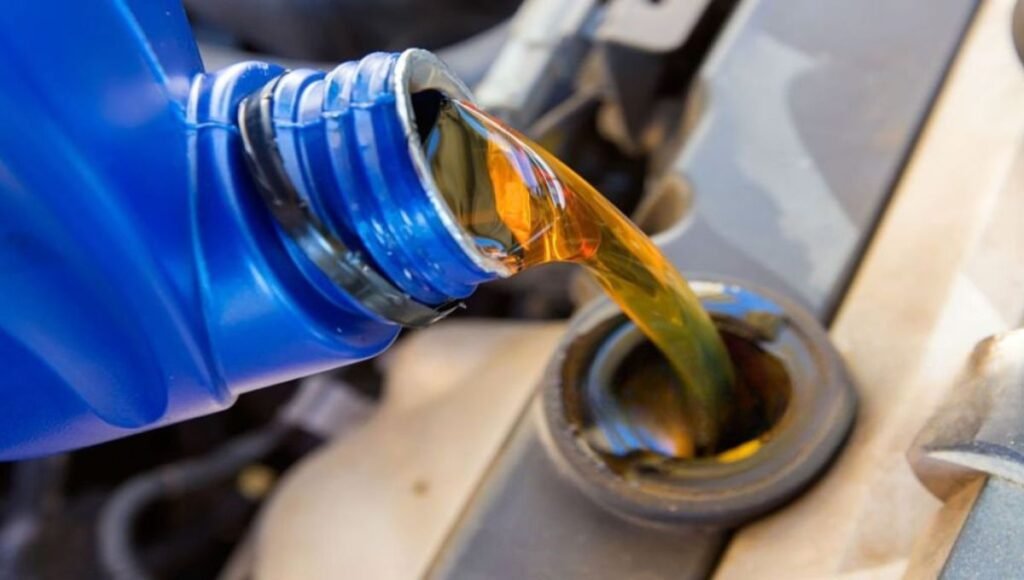
Choosing The Right Hydraulic Fluid
Not all hydraulic fluids are the same. Picking the right one for your John Deere tractor is critical. Use the fluid recommended in your tractor’s manual. John Deere provides specific fluids for their tractors.
- Check the manual for the correct fluid type.
- Look for John Deere hydraulic fluids.
- Ensure it meets the required specifications.
Using the wrong fluid can cause damage. Always check hydraulic fluid Level on John Deere tractor on recommended type.
Step-by-step Fluid Refilling
- Park your tractor on a level surface. This ensures an accurate fluid level reading.
- Turn off the engine. Let it cool for safety.
- Locate the hydraulic fluid reservoir. This is often near the rear of the tractor.
- Clean the area around the cap. This prevents dirt from entering the system.
- Remove the cap. Use a clean cloth if needed.
- Check the current fluid level using the dipstick. Wipe it clean first.
- Add the recommended hydraulic fluid. Pour slowly to avoid spillage.
- Re-check the fluid level. Ensure it’s within the recommended range.
- Replace the cap securely. Make sure it’s tight to prevent leaks.
- Start the engine. Run it for a few minutes.
- Check for any leaks. Fix them immediately if found.
Regularly checking and adding hydraulic fluid keeps your tractor running smoothly. Follow these steps to maintain your machine efficiently.
Maintaining Hydraulic System Health
Keeping your John Deere tractor’s hydraulic system in top condition is crucial. Proper maintenance ensures smooth operation and prevents costly repairs. A key part of this maintenance is checking the hydraulic fluid level regularly.
Regular Check Intervals
Regular checks of hydraulic fluid levels help maintain system health. Check the fluid every 50 hours of tractor operation. This ensures the system operates efficiently and prevents wear and tear.
Follow these steps to check the hydraulic fluid level:
- Park the tractor on a level surface.
- Turn off the engine and let it cool.
- Locate the hydraulic fluid reservoir.
- Remove the dipstick or cap from the reservoir.
- Wipe the dipstick clean and reinsert it.
- Remove the dipstick again and check the fluid level.
- Ensure the fluid is within the recommended range.
If the fluid is low, add the recommended hydraulic fluid. Avoid overfilling, which can cause pressure issues.
Dealing With Hydraulic System Leaks
Hydraulic system leaks can cause significant issues. Regularly inspect hoses, seals, and fittings. Look for signs of fluid leakage.
If you find a leak, follow these steps:
- Identify the source of the leak.
- Tighten any loose fittings.
- Replace damaged hoses or seals.
- Refill the hydraulic fluid if needed.
Remember, ignoring leaks can lead to severe damage. Prompt repairs ensure the hydraulic system remains healthy and efficient.
Use these simple steps to maintain your John Deere tractor’s hydraulic system. Regular checks and prompt repairs keep your tractor running smoothly.
Troubleshooting Common Hydraulic Issues
Hydraulic systems in John Deere tractors are essential. They power various functions and ensure smooth operation. Sometimes, these systems face problems. Identifying and addressing these issues is crucial. Below are steps to troubleshoot common hydraulic issues.
Addressing Overheating Problems
Overheating is a common hydraulic issue. It can cause system failure. Follow these steps to address overheating problems:
- Check the Hydraulic Fluid Level: Ensure the fluid is at the correct level. Low fluid can cause overheating.
- Inspect the Cooling System: Look for blockages or leaks. Clean or repair as needed.
- Monitor Fluid Quality: Contaminated fluid can cause overheating. Replace with clean fluid if necessary.
- Evaluate Pump Efficiency: A failing pump can overheat. Consider replacing the pump if it shows signs of wear.
Fixing Erratic Operation
Erratic operation in hydraulic systems can disrupt tractor functions. Here’s how to fix it:
- Check for Air in the System: Air can cause erratic movements. Bleed the system to remove air pockets.
- Inspect Hydraulic Hoses: Look for kinks or leaks. Replace damaged hoses.
- Examine Control Valves: Dirty or worn valves can cause issues. Clean or replace them as needed.
- Test Cylinder Operation: Faulty cylinders can cause erratic movements. Repair or replace defective cylinders.
By following these steps, you can address common hydraulic issues in your John Deere tractor. Keep your system well-maintained for optimal performance.
Ensuring Longevity Of Your Tractor’s Hydraulics
Maintaining your John Deere tractor’s hydraulic system ensures its longevity and efficiency. Regularly checking the hydraulic fluid level is crucial. This helps prevent potential damages and costly repairs. Below, we summarize the key points and share some final thoughts on hydraulic maintenance.
Summary Of Key Points
- Regularly check the hydraulic fluid level to avoid system failures.
- Use the correct fluid type as recommended by John Deere.
- Inspect the hydraulic lines for leaks or damages.
- Follow the manual for precise instructions on fluid level checking.
- Keep a maintenance schedule to ensure routine checks and services.
Final Thoughts On Hydraulic Maintenance
Proper hydraulic maintenance keeps your tractor in peak condition. Regular checks prevent breakdowns and extend the tractor’s life. Always use the recommended fluid to avoid damage. Inspect hydraulic lines frequently for leaks or wear. Create a routine maintenance schedule and stick to it. This ensures your tractor operates smoothly and efficiently.
By following these steps, you can ensure the longevity and performance of your John Deere tractor’s hydraulics. Regular maintenance and proper care are key to a reliable and efficient machine.
How Do I Check Hydraulic Fluid On John Deere Tractor?
To check hydraulic fluid, park on a level surface. Locate the hydraulic reservoir dipstick. Remove, wipe, and reinsert it. Pull it out again and ensure the fluid level is within the recommended range.
What Type Of Hydraulic Fluid For John Deere Tractor?
John Deere recommends using their proprietary Hy-Gard hydraulic fluid. It meets the specifications for their tractors. Always refer to your owner’s manual for precise fluid type and specifications.
How Often Should I Check Hydraulic Fluid?
Check the hydraulic fluid level every 50 hours of operation. Regular checks ensure optimal performance and prevent potential damage. Always follow the maintenance schedule in your owner’s manual.
Can Low Hydraulic Fluid Damage My Tractor?
Yes, low hydraulic fluid can cause serious damage to your tractor. It can lead to overheating, poor performance, and system failure. Always maintain the correct fluid level.
Conclusion
Regularly checking the hydraulic fluid level on your John Deere tractor ensures optimal performance. Always follow the manufacturer’s guidelines for best results. Proper maintenance extends the life of your equipment. Keep your tractor running smoothly by making this a routine task.
Your John Deere will thank you with years of reliable service.
